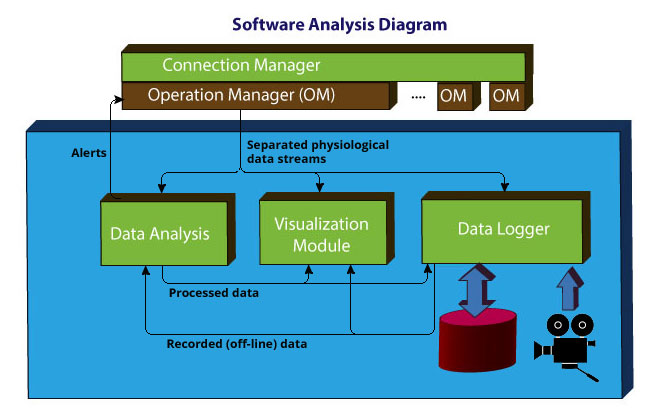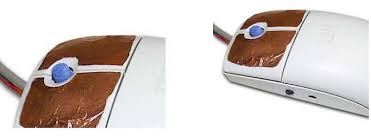-2.png?width=700&name=blog%20banner%20(1)-2.png)
Have you ever thought about what will happen if our smartphones, tablets, and computers acquired the ability to sense our emotions? Imagine a world where machines can identify us, feel our presence, and interact with us the way we interact with each other. A world where machines can judge what we are feeling based on our facial expressions, hand gestures, eye movement, and our voice tone while speaking. All these things will soon be a part of the world we are living in and will be achieved with the help of Blue Eyes technology.
Blue eyes technology has been conducted by the research team of IBM at Almaden Research Center (ARC) in San Jose, California since 1997. It is an amalgamation of both hardware and software technologies with the help of which we can build machines having human-like sensory and perceptual abilities. In Blue eyes technology, Blue stands for Bluetooth which depicts a wireless and reliable mode of communication and helps in creating a PAN (Personal Area Network) for linking various components of the Blue Eyes devices, and Eyes that help us perceive the world and obtain interesting information.
The idea of Blue Eyes technology is similar to Affective Computing. Affective Computing was coined in 1995 in a research paper by Rosalind Picard. It can be described as a modern branch of computer science with a combination of psychology and cognitive science.
Hardware used in Blue Eyes Technology
The Blue Eyes technology has two main hardware components - Data Acquisition Unit (DAU) and Central System Unit (CSU).
Data Acquisition Unit’s main objective is to acquire data with the aid of numerous sensors such as beepers, LCD screens, LED indicators, etc., and to transfer all that data to CSU with the help of Bluetooth. It uses Atmel 89C52 as its principal component.
The Central System Unit’s task is to analyze and process the data sent by DAU. It also performs access verification and system maintenance.
The interaction between DAU and CSU is depicted in the diagram below :

Software used in Blue Eyes Technology

The software present in a Blue-Eyes device continuously monitors the conditions of the surroundings. When the conditions change, the software performs real-time analysis of the incoming data and triggers several operations based on the captured data.
The connection manager manages wireless communication between Data Acquisition Unit and Central System Unit.
The physiological conditions of the user received by the sensors are analyzed by the Data Analysis module.
The Visualization module acts as a UI for the superiors and helps them to watch the physiological condition of the user with a preview of the audio and video streams.
Blue Eyes Devices
The devices used for collecting the information in this technology are as unique as the technology itself. These are specially designed to obtain a plethora of data through touch, perception, hearing, etc.
Some of the devices used in this technology are:
Emotion Mouse (For Hand).jpg?width=496&name=emotional%20mouse(1).jpg)
Emotion mouse is an input device that looks like a conventional mouse but it serves the purpose of evaluating the emotions of the user. It has pressure, photo, temperature, and GSR sensors that can classify a user’s emotions into different categories like - fear, surprise, anger, sadness, happiness, disgust, etc. while the user is interacting with the computer.
Sentic Mouse

Sentic mouse is also an extension to computer mouse having directional pressure sensors giving conventional mouse the ability to measure emotional valence i.e. to sense attraction or avoidance for objects present on the computer screen.
Expression glass (For Eyes)
.jpg?width=622&name=Expression%20Glass(1).jpg)
Expression glasses are wearable devices that help in determining what the
user is interested in at a particular time by analyzing the interaction between user and computer. These glasses remember what the user is watching and also catch the facial expressions of the user at that time. Combining that visualization with the emotion of the user gives the level of interest a user has for that thing. One of its prototypes used piezoelectric sensors.
Conclusion
There is an enormous scope of Blue Eyes Technology in the imminent future and the possibilities are endless. Some popular applications include Magic Pointing that deals with accessing the mouse pointer with the help of the gaze of the eyes by tracking the movement of the user’s eye using an Infrared light source and SUITOR (Simple User Interest Tracker) which involves the use of the Expression Glasses.
The Artificial Intelligence Speech Recognition technique is also being used in combination with Blue Eyes Technology to provide a better user experience.
Various devices are being made using this technology and some are in the phase of being a topic of research.
In the forthcoming future, the idea of machines understanding emotions might be extended to machines having emotions and we can just assume where it will lead us to?



